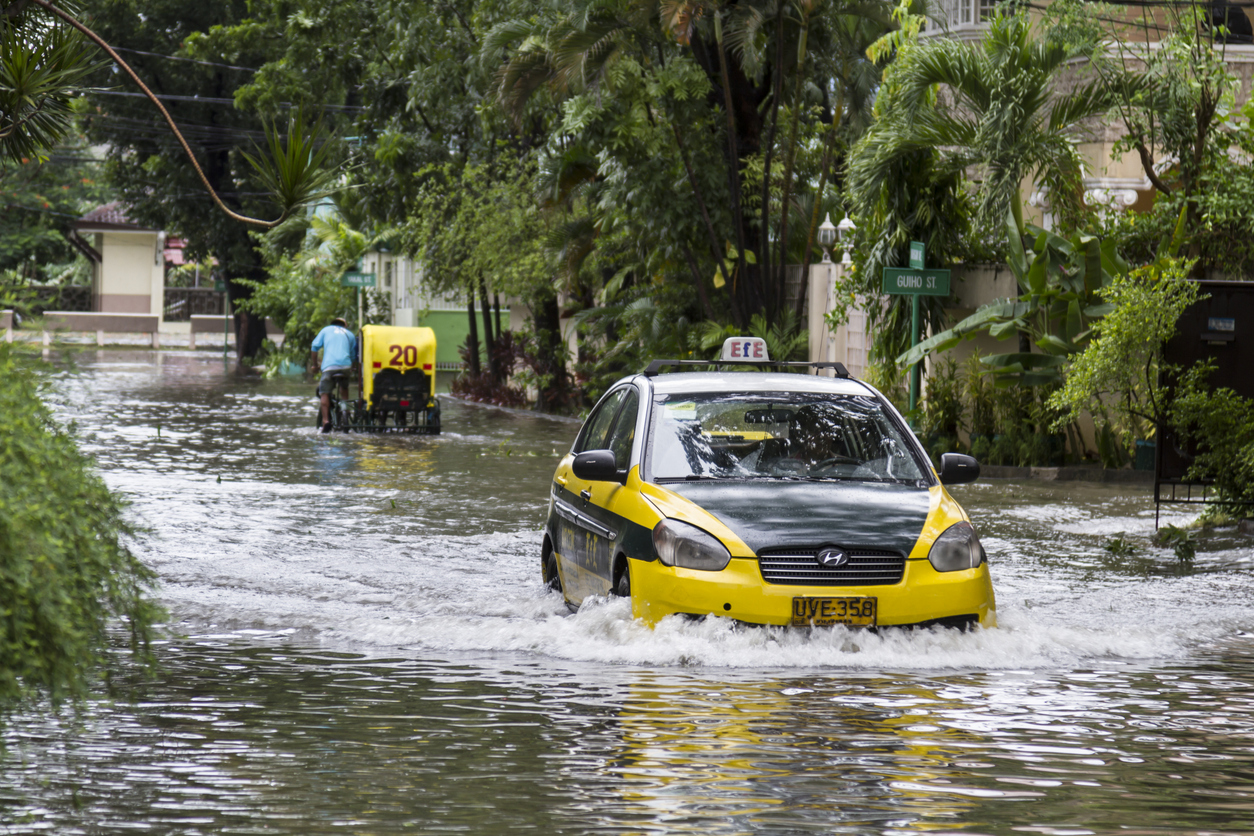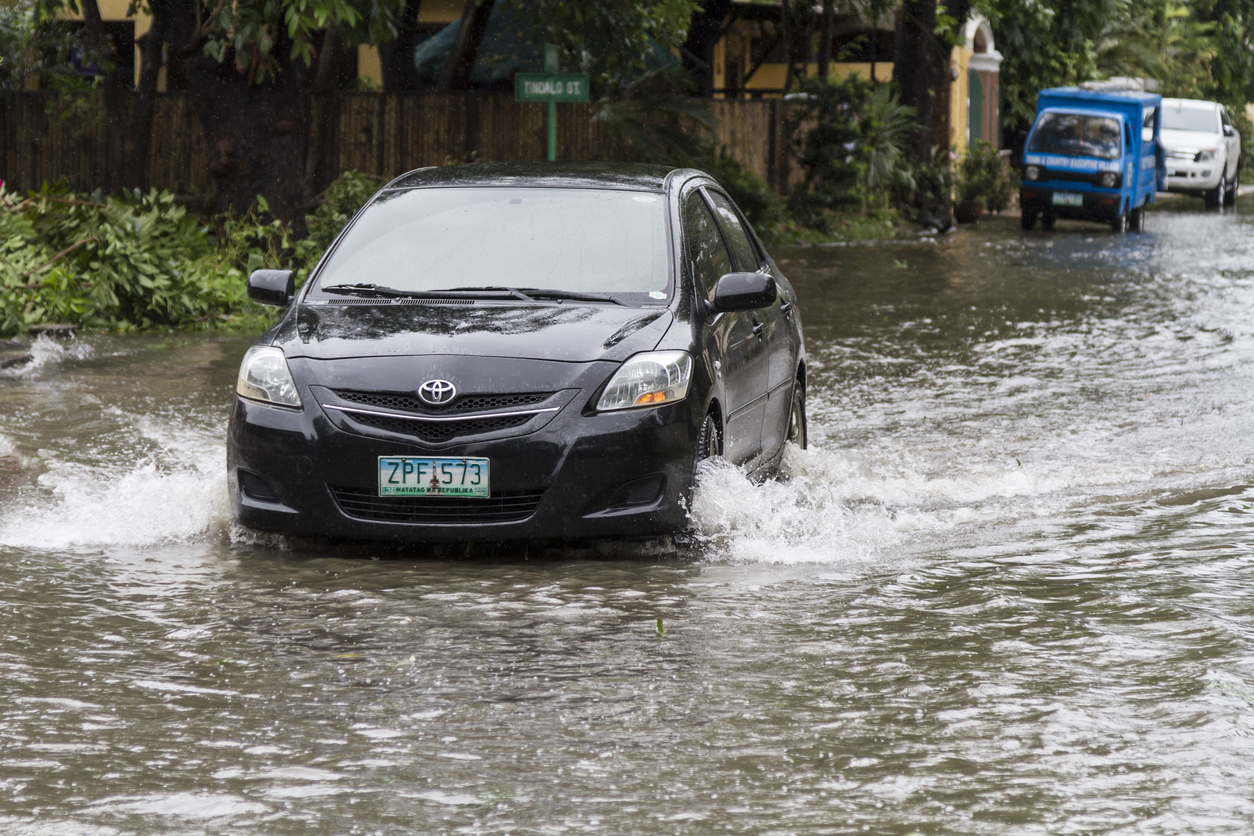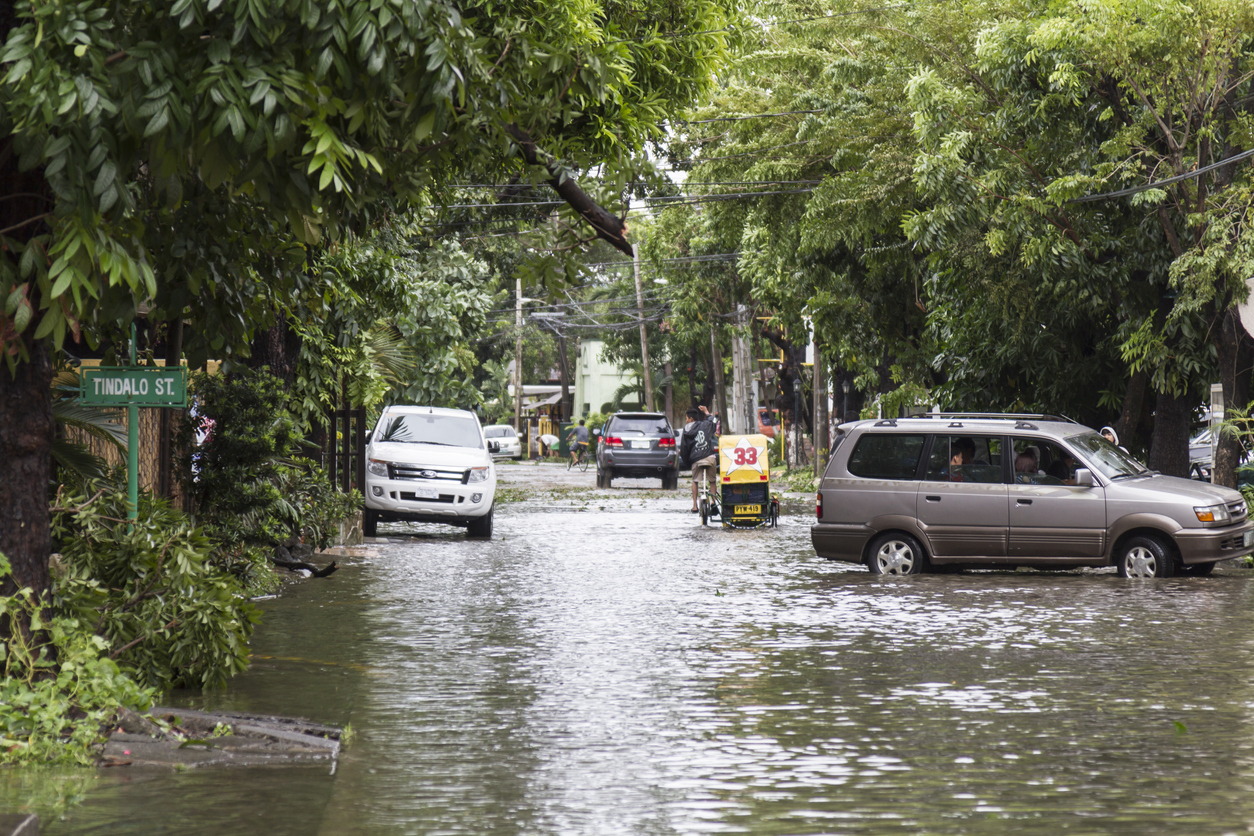The Motorist Guide to driving through a flood
 [Photo Credit: iStock]
[Photo Credit: iStock]
Years have passed since Typhoon Glenda, but floods continue to strike our lands. To keep both you and your vehicle safe, here’s a handy guide on driving your vehicle through a flood.
Just when you think it’s finally safe to take your trusty metal steed for a drive, the gods decide to bless you with yet another abundance of rainfall.
Our numerous downpours are so torrential that hundreds of thousands of lives are affected each time.
Since flooded roads are a common occurrence for many drivers, we took the liberty to compile this handy guide to help you ‘bangka’ your way through the high tides.
Things to do before and while driving through a flood
 [Photo Credit: iStock]
[Photo Credit: iStock]
Check the water level before driving through a flooded area
This goes without saying, but you should first check the water level before attempting to drive through a flooded road.
If you have an SUV or a vehicle that is slightly higher off the ground, you should be able to pass through the floodwater without many problems.
For those driving ‘low’ cars, or have lowered your car’s suspension, you should consider finding another route as floodwater could seep through your door sills if they are not fitted correctly.
Not only will this damage your car’s interior, but you might end up with an expensive repair bill if any electronics or engine components get damaged.
Drive slowly and steadily
Never speed through a flood. This causes a bow wave which can splash onto other vehicles and pedestrians. Not only is this an inconsiderate move, but it might also damage your engine if water somehow manages to get in.
The general rule of thumb is to avoid driving faster than your bow wave. If you see oncoming traffic, it will be in your best interest to allow them to pass first. That way your bow wave will not meet theirs.

[Image Credit: Northampton Advanced Motorists]
Never speed as it causes aquaplaning
Aquaplaning occurs when a layer of water builds up between your tyres and the road's surface. When this happens, you will lose control of the vehicle and find it difficult to brake, steer and accelerate, which is very dangerous.
If your steering starts to feel ‘lighter’, gently let go of the accelerator and hold your steering wheel straight. Do not step on the brakes too hard or turn your steering wheel suddenly as it might cause your car to skid.
Once you feel you have gained back control of your vehicle, you can start to brake to reduce your speed gently.
Drive in the centre of the road and keep the revs up
Why? That’s because floodwater usually collects in the centre of the road, which happens to be the most shallow.
Stay in first gear while navigating through a flood and keep revving your engine to prevent water from entering your exhaust pipe.
If water does enter your engine, it will cause your vehicle to stall.
Things to do after crossing a flooded road
 [Photo Credit: iStock]
[Photo Credit: iStock]
Inspect your brakes
After driving through a flood, your brakes will be wet and may lose their grip if you brake at high speeds. Always remember to pump your brake pedal a couple of times after passing through a flood.
Doing so will let the brake pads dry themselves by coming into contact with the rotors/drums.
Check for wet carpeting and mats
Tiny holes in your car’s undercarriage may cause floodwater to enter your car’s cabin. To check for this problem, make sure you physically inspect your carpet and mats to ensure they are not wet.
If water has seeped through the bottom, make sure you wipe and dry it as soon as possible to avoid that nasty damp smell from occurring.
Monitor your engine and engine oil
Does your car engine make an odd sound after passing through a flood? Do you feel a loss of power while driving? If your answer is “yes”, water might have made its way into your engine.
One way to check for this is to check your oil dipstick. If the oil appears milky, beige, or diluted, then water is present.
If this happens, do not drive your vehicle. It would be best to tow it to your preferred workshop instead.